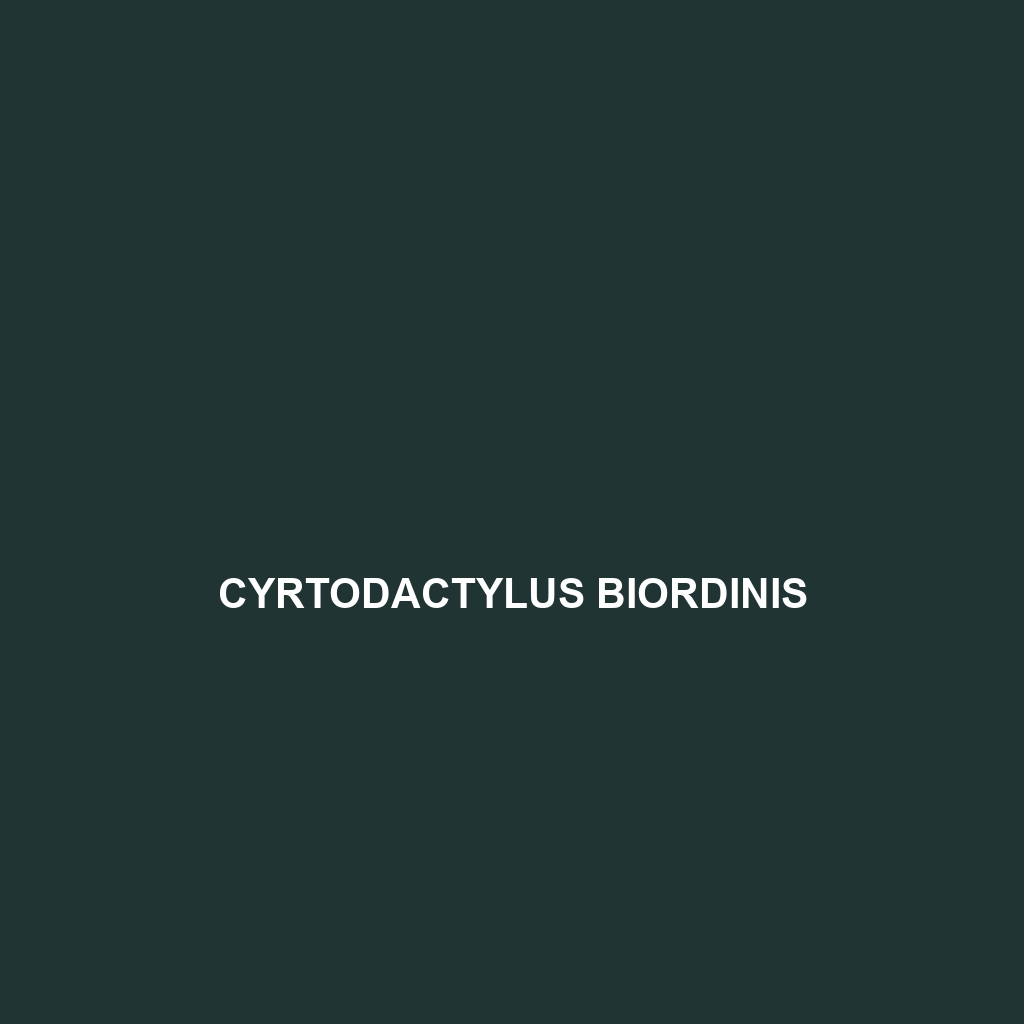Cyrtodactylus biordinis
Common Name: Cyrtodactylus biordinis
Scientific Name: Cyrtodactylus biordinis
Habitat
Cyrtodactylus biordinis is primarily found in the subtropical and tropical rainforests of Southeast Asia, particularly in regions of Malaysia and Indonesia. This species thrives in humid environments with dense foliage, often residing in leaf litter, under rocks, or within tree hollows. The warm climate and rich biodiversity of these areas provide an ideal habitat for these geckos.
Physical Characteristics
The Cyrtodactylus biordinis typically measures between 10 to 15 cm in length. It displays a distinctive color pattern, with shades ranging from light brown to dark gray, adorned with irregular dark spots that help it blend into its forest surroundings. A notable characteristic of this species is its flat, elongated body and large, bulging eyes, which are adapted for low-light conditions. The presence of unique toe pads allows for enhanced climbing abilities in its arboreal habitat.
Behavior
This gecko exhibits predominantly nocturnal behavior, coming to life after sunset to hunt and forage. Its agile movements enable it to navigate through the trees and shrubs efficiently. Cyrtodactylus biordinis is known for its ability to communicate through a series of chirps and body postures, which play a crucial role in mating rituals and territorial disputes.
Diet
Cyrtodactylus biordinis is insectivorous, primarily feeding on a diet of small insects and invertebrates, including crickets, moths, and beetles. Its feeding habits are crucial for controlling insect populations within its ecosystem, making it a valuable contributor to the food web.
Reproduction
This species typically breeds during the warmer months, with mating seasons peaking in late spring. After a gestation period of around 30 days, females lay two eggs in hidden spots to protect them from predators. The offspring emerge after approximately 60 days, fully formed and independent, undergoing a series of molts as they grow.
Conservation Status
The current conservation status of Cyrtodactylus biordinis is listed as vulnerable on the International Union for Conservation of Nature (IUCN) Red List. This status is primarily due to habitat loss from deforestation and climate change, which threaten their natural habitats and populations.
Interesting Facts
Cyrtodactylus biordinis has a remarkable ability to change its skin color for camouflage, helping it evade predators. Additionally, this species is known for its longevity, with some individuals living up to 10 years in captivity.
Role in Ecosystem
Cyrtodactylus biordinis plays a significant role in its ecosystem as both a predator and prey. By consuming a variety of insects, it helps regulate their populations. Conversely, it serves as a food source for larger predators, contributing to the biological diversity and stability of its habitat.
